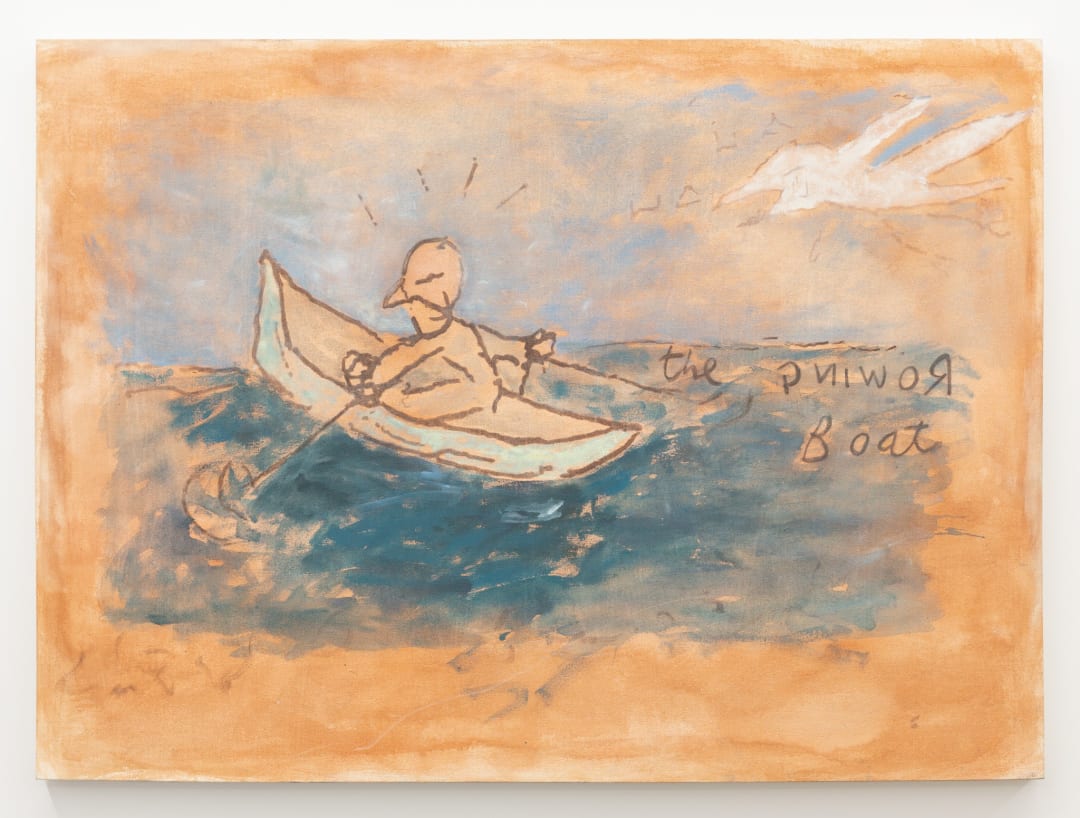With a guest appeaRance by Mitch Cairns
It is with great pleasure that Sumer announces its latest exhibition, Misrepresentations, featuring works by the late Argentinian-born New Zealand artist Tom Kreisler (1938–2002). The exhibition features a selection of this important artist’s latter paintings and drawings; works dating from the late 1990s to the early 2000s, many of which have not been seen for the best part of two decades or longer. This is the gallery’s first presentation of Kreisler’s work.
The gallery wishes to express our sincere thanks to the artist’s estate for the opportunity to present the first substantial presentation of Kreisler’s work to audiences in Tāmaki Maukaurau Auckland since 2016. Additionally, we would also like to thank Sydney-based artist Mitch Cairns, who has kindly agreed to make a guest appearance within this exhibition and will also be present at exhibition’s opening reception. Cairns appears courtesy of The Commercial, Sydney.
Tom Kreisler is possibly New Zealand's most under-recognised important painter. While that was partly his own making—he was modest and not a joiner—it is mainly the product of the lazy-minded inattentiveness of our small culture, its neglect of sophistication of a kind with which it is not familiar. In fact, Tom's sophistication is rendered the more important by reason of the fact we have so little of it. .. It's [his paintings] hallmark is of course its humour, which is complex and nuanced, partly because it is at the same time often simple or deadpan, humour which amuses but may also satirise or puzzle. The humour is a necessary disguise and vehicle for the truths of feeling and ideas that are inseparable from the nature of the work."
–Wystan Curnow, art critic, curator, and poet, 2005
An artists’ artist; a badge worn uncomfortably by most. Understandably so, this barbed term of endearment speaks of an artists’ appreciation by their peers (as those that very often possess the greatest knowledge of art discourse) at the expense of mainstream recognition or success. One might argue that Kreisler is one such artist. Dying suddenly and unexpectedly at the age of 63, sadly he was not able to appreciate much of the recognition which has been afforded to his work, by both by his peers and a generation of artists that have discovered his work since—thanks in part to his posthumous monograph Comma Dot Dogma (2004), and retrospective touring exhibition Tom Kreisler (2007–08). Which leads one to ask, would if such a title would have bothered him? Apropos to his work, the answer would most certainly be, “yes, and no.”
The exact reasons for why Kreisler is heralded by other artists is obvious, and it’s precisely the very same reasons that describing his significance proves difficult. Perhaps tricky is the better adjective here. Certainly, he was a trickster. His work, which plays with representation, language and meaning, is slippery by design; enigmatic and mercurial, riddled with contraction and paradox. It is work possessing a playful sophistication, deployed with an economy of means. Always saying more with less. Moreover, his is work is obstinate, squarely refusing spectacle. Work that wilfully rejects the sanctimony indulged by many of his more widely celebrated antecedents and contemporaries. It is instead, characteristically irreverent, sardonic, and at times base, or profane; relishing, even haunting, in its shitness. Enlightening, paradoxically, for its crumpled and lumpen obtuseness. Telling bad jokes—the ones which you’re not sure were ever really meant to be funny in the first place. Art jokes.
It’s a bit of rubbish I wrote one day, and it says: “Having lived with myself as a Foreigner, an outsider to most cultures. I know what I like in my work, and try to shape it accordingly.”
– Tom Kreisler, 29 August 2001
Tom Kreisler was born in Argentina in 1938, to a Jewish family who had left Barcelona to escape the Spanish civil war, coming to Buenos Aires by way of Vienna in 1936-37. Soon after the sudden death of his father, and in light of his rebellious and truant behaviour, he was presented with two options by his mother: work in his uncle’s millinery factory, or spend a period of time with his Aunt Edith and Uncle George in Christchurch, New Zealand. He leapt at the later opportunity and so when he was 13, he boarded a ship alone that would take him to these distant shores where he would spend much of his life.
Over the course of subsequent years, Kreisler was consistently reminded of his foreignness in this new land, but it was through his art practice that he was able to ruminate on this unique position and provide a socially, politically, and culturally dense body of work that resonates to this day. It is a testament to this artist’s prescience that his work has continued to grow in stature in more recent years, more than two decades after this artist’s passing.
Within his lifetime and since, Kreisler’s work has been exhibited widely throughout Aotearoa New Zealand, as well as select exhibitions in Australia, Mexico, and the United States. His work is represented in important public collections across Aotearoa New Zealand and Australia, including The Govett-Brewster Art Gallery, Chartwell Collection/Auckland Art Gallery, Christchurch Art Gallery, Sarjeant Gallery, Waikato Museum, Rotorua Museum and The Art Gallery of New South Wales.


